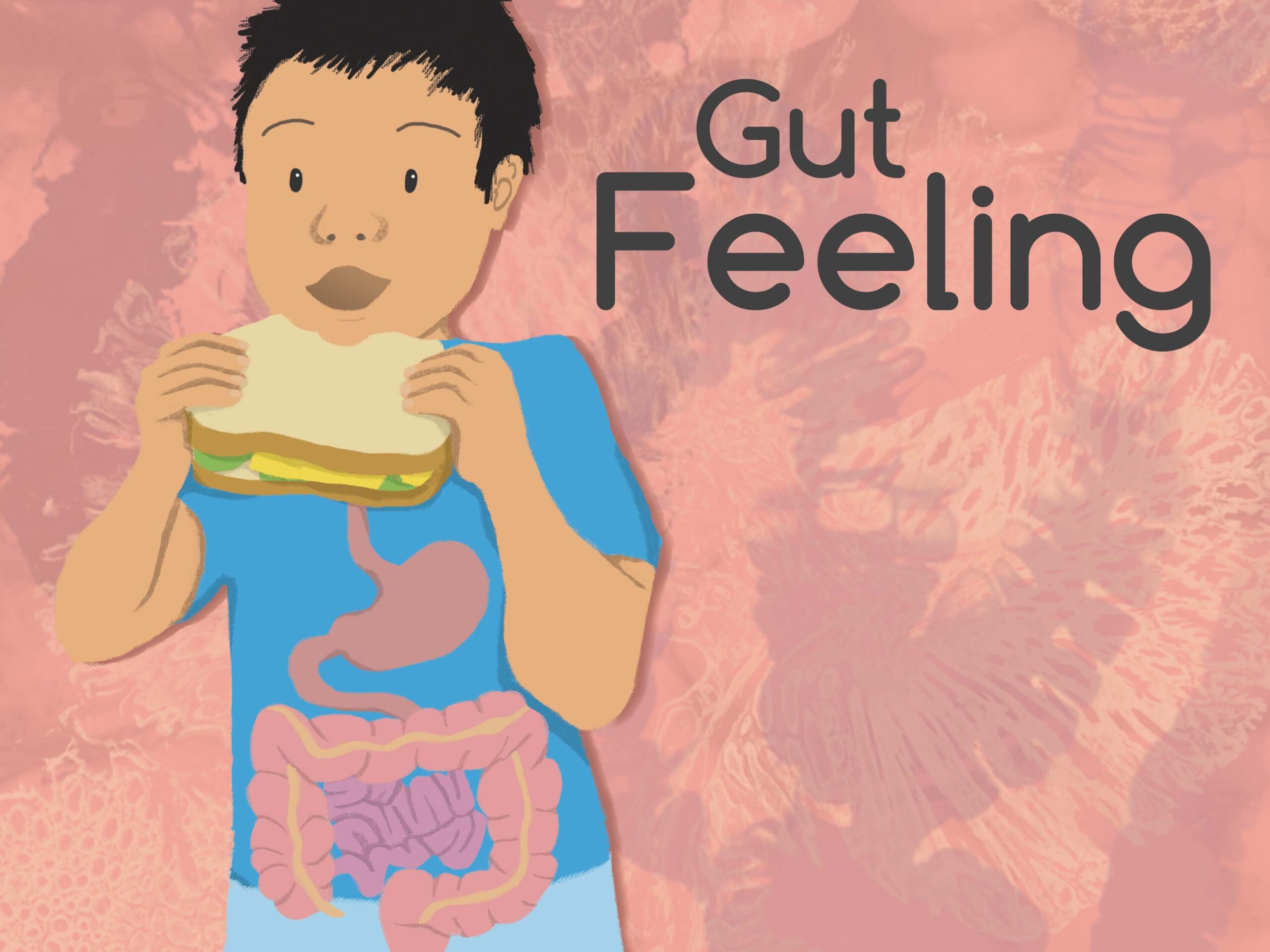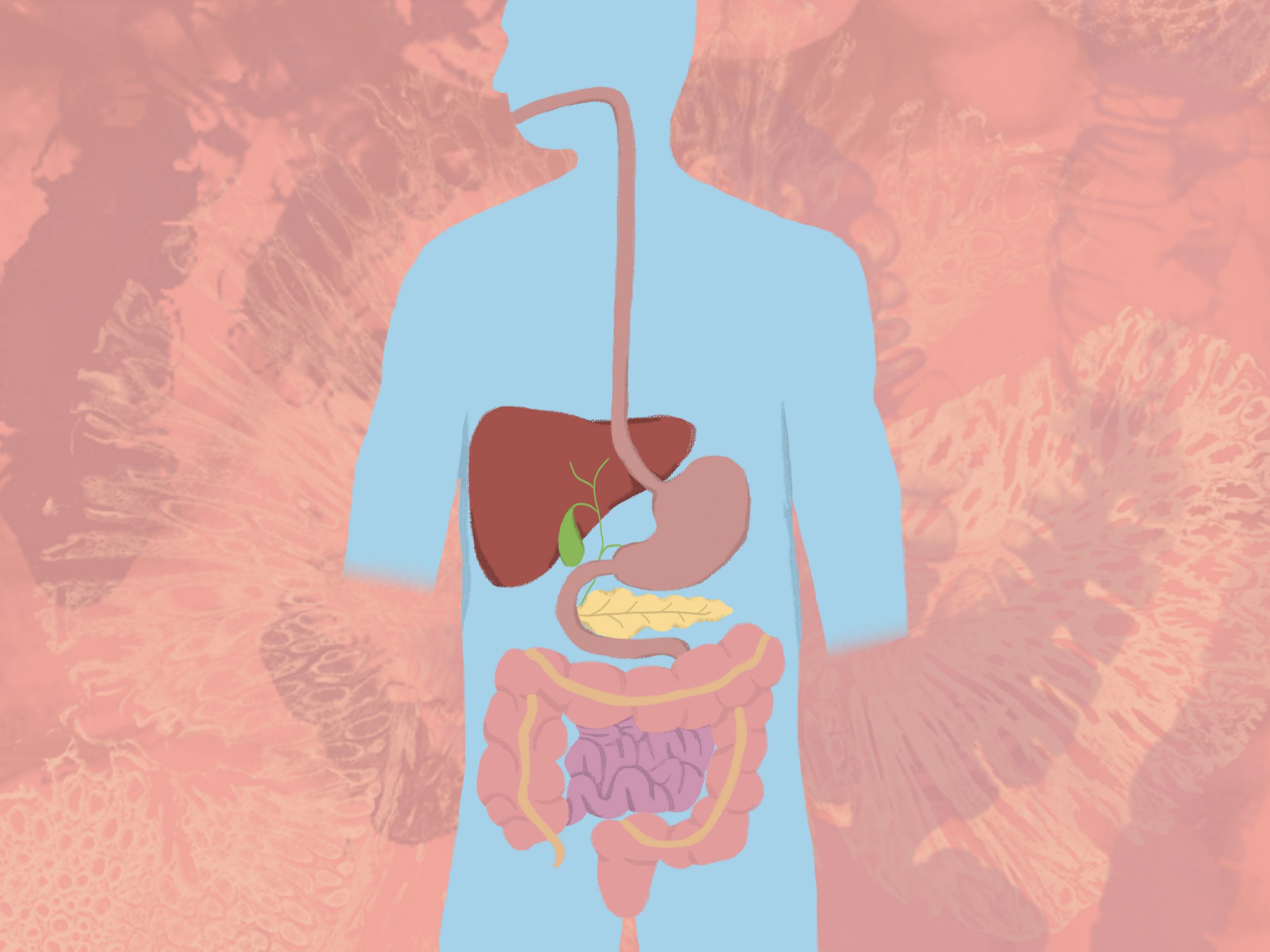
Gut Feeling
Let us take you on the weird and wonderful journey of one boy’s breakfast as it gets chomped and chewed in the mouth, pushed through the oesophagus, churned in stomach acids, absorbed in the intestines and greeted by the toilet bowl! This show will unravel the fascinating structure and function of the digestive tract, why ‘we are what we eat’, what happens to the guts of patients with bowel diseases, and what makes the perfect poo!
Recommended for:
- Ages – 7 to 12 Year Old’s
- Key Stage – KS2, KS3
- School Group – Year 3 to Year 7
Key Learning Points:
- Structure and function of digestive organs
- How food is digested
- What nutrients are essential for the human body and how they help us grow
and function - What happens when the cells inside our guts go wrong
- How bacteria in our gut can be helpful to us
Delivery
Available to book in our Neuron Pod and via Outreach
Neuron Pod
- Duration – 60 minutes
- Maximum group size – 50 people (Inc. adults)
Outreach
- Duration – 60 minutes
- Maximum group size – 70 people
Accessibility Guidance:
This show contains the following materials and stimuli.
- The (fake) poo can have an unpleasant texture (only one volunteer will interact with it)
- Use of banana, bread, coffee, oats and coloured water (some smells but not strong unless you are the volunteer for this section)
- This show has a high number of volunteers
Information for Schools:
Key stage 2 Science curriculum links
Animals, including humans
Year 3
• identify that animals, including humans, need the right types and amount of
nutrition, and that they cannot make their own food; they get nutrition from
what they eat
Year 4
• describe the simple functions of the basic parts of the digestive system in
humans
• Identify the different types of teeth in humans and their simple functions
Year 6
• recognise the impact of diet on the way their bodies function
• describe the ways in which nutrients and water are transported within animals,
including humans
Key stage 3 Science curriculum links
Cells and organisms
• cells as the fundamental unit of living organisms
• the hierarchical organisation of multicellular organisms: from cells to tissues to
organs to systems to organisms
Nutrition and digestion
• content of a healthy human diet: carbohydrates, lipids (fats and oils), proteins,
vitamins, minerals, dietary fibre and water, and why each is needed
• calculations of energy requirements in a healthy daily diet
• the consequences of imbalances in the diet, including obesity, starvation and
deficiency diseases
• the tissues and organs of the human digestive system, including adaptations to
function and how the digestive system digests food (enzymes simply as
biological catalysts)
• the importance of bacteria in the human digestive system

